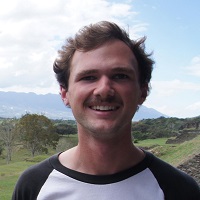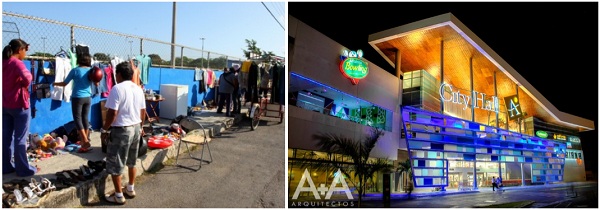Everything happens in the city. It’s where the wealth is concentrated. Where the rich and the poor flock with hopes of making ends meet or adding to an already established comfort. Though, not everyone is lucky enough to live near the city center where the access to essential resources and opportunity is within reach. It’s a daily struggle for those outside of this epicenter to survive. Like the other twenty largest cities in Mexico, Mérida is a tale of two cities. A dichotomy blurred by the night skies but all too apparent in the light of day.
Agriculture, commerce, textiles and tourism are the driving forces behind Mérida’s economy today. Following the Mexican Revolution and the collapse of the sisal plantations and haciendas in the late 1900s, the city fell into economic despair.
More recently, the city and the entire Yucatan peninsula have thrived as a result of North Americans and Europeans coming to the region. The affordable and authentic Mexican living coupled with the rich cultural environment have intrigued many.
Paseo Montejo, Mérida’s Plaza Grande and the many cenotes and archaeological sites that dot the Yucatan Peninsula have attracted foreigners for years. But lately the city has received a growing number of transplants who don’t just simply come to visit, but to find a new home and retire quietly. More often than not near the centro or just to the north. While the city center continues to boom as a result, those on the outskirts of the city’s limits haven’t seen much invested into them.
If you look at what attracts outsiders and where those sites are concentrated, you will find that the vast majority of them are located on the north side of the city or a day’s drive outside of it. Mérida’s south side has received very little of the attention and development that the north side has experienced. In 2014 Mérida’s annual Carnival festival was relocated to the Xmatkuil fairgrounds just outside of the city to the south. However the decision stirred more resentment than revitalization.
For more than 80 years Mérida’s Carnival celebration had been situated along Paseo Montejo, right in the thick of the ‘business sector’ filled with businesses and hotels. Business owners greatly benefited from the influx of people that the festival brought. While the hopes were to attract more people and provide growth on the south side with the move, it can be argued that the opposite in fact happened.
The celebration went from being easily accessible and within walking distance, to a lengthy drive outside of the city. Despite the growing number of tourists, the move arguably had a more negative impact on the amount of people in attendance and the overall excitement over the festival. Rather than a unifying force, the move left community members feeling excluded and missing that sense of tradition that had been present for so many years. Carnival, one festival with two identities depending on its location, just wasn’t as attractive on the south side.
Mérida’s dual identity is also evident as one walks through the city center to catch the bus to the south side of town. The centro pulses with a vibrance that is unavoidable. Eyes lock to colors shining from fruit stands in the market, street vendors intrigue you at every corner, people are all around you. But as the bus travels farther from this epicenter the people dwindle in numbers, street lights flicker and corner stores have closed their doors for the evening.
Intertwined in this duality of worlds battling for space within one city, separated only by an imaginary line, the people stay constant. Despite the fragmented distribution of resources and their varying accessibility, and the perceived attractiveness of each side, there’s a lightness in the people. It’s a warm feeling felt from the smiles of passersby, in the buenos días, buenas tardes and buenas noches that fill the air as you walk Mérida’s streets. The city’s division hasn’t broken the people’s sincerity towards each other.
Mérida offers a small window into an issue that plagues cities all over the world. Where invisible lines divide a city based on the access to essential resources and economic opportunity. Where walls that can’t be seen are built to keep people coming back to the parts that have been invested in and developed.
As the world becomes increasingly more diverse the hope is that the lines will fade and the walls will fall. That eventually all people, regardless of where they were born or where they live, will have equal access to resources and an equal chance at living comfortably. That one day decision makers will see the potential of one city, and not just certain parts of a city they helped to divide.
By Parker Asmann for TYT
 Parker Asmann is a Chicago based journalist and a 2015 graduate of DePaul University with degrees in Journalism and Spanish, along with a minor in Latin American & Latino Studies. He is currently an Editorial Board Member for a bilingual Chicago based publication, El BeiSMan, where he focuses on issues of social justice and human rights. Parker has lived and studied in Mérida, Yucatán.
Parker Asmann is a Chicago based journalist and a 2015 graduate of DePaul University with degrees in Journalism and Spanish, along with a minor in Latin American & Latino Studies. He is currently an Editorial Board Member for a bilingual Chicago based publication, El BeiSMan, where he focuses on issues of social justice and human rights. Parker has lived and studied in Mérida, Yucatán.





